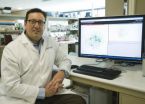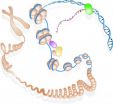(Press-News.org) The World Health Organization is about to roll out a new strategy for AIDS prevention in South Africa, a country where more than 5 million people are infected with HIV. Based on a mathematical model, the WHO predicts this strategy will completely eliminate HIV in South Africa within a decade.
But not so fast, suggests a group of UCLA researchers. Their work challenges the proposed strategy by showing it could lead to several million individuals developing drug-resistant strains of HIV. And further, they say, it will cost billions of dollars more than the WHO has estimated.
Reporting in the current issue of the journal PloS ONE, senior author Sally Blower, director of the UCLA Center for Biomedical Modeling, and first author Bradley Wagner, a postdoctoral scholar in Blower's lab, used sophisticated computer modeling to evaluate the WHO's proposed strategy.
"By developing our own mathematical model and reevaluating the WHO's proposed strategy for South Africa, we found the WHO's predictions are wrong," Blower said.
"This is because their model is unrealistic," Wagner added. "If you use an unrealistic model, you get the wrong answer."
The method under debate is the WHO's universal "test and treat" strategy. This strategy is based on testing the entire population of South Africa annually for HIV, then treating every individual immediately after infection, before they develop symptoms. "Test and treat" uses treatment as a method of prevention, as treatment makes individuals less infectious. It would mean treating nearly 5 million individuals in South Africa almost immediately, the UCLA researchers say.
The WHO model predicts "test and treat" would be better than only treating the 1.6 million people in South Africa who have symptoms and actually need treatment. The organization's model predicts that treating the 1.6 million alone would not eliminate HIV and, over 40 years, such an approach would be more expensive than the "test and treat" strategy.
"But," Blower said, "our model shows the opposite."
"Our model shows that providing treatment to the 1.6 million people who are in need of treatment would be very effective as a form of 'treatment as prevention,'" said Wagner. "It could bring the HIV epidemic in South Africa close to elimination and prevent 11 million infections over the next 40 years. Our model also shows the WHO's 'test and treat' strategy would actually cost $12 billion more than providing treatment to the 1.6 million in need."
"The difference between our results and those of the WHO is because we assume that drug-resistant strains can develop in treated individuals, and therefore they will need more expensive 'second-line' drugs," Blower said. "The WHO assumes drug resistance will not evolve, and, essentially, there will be no need for 'second-line' drugs."
The UCLA researchers said they agree that the WHO's "test and treat" strategy would indeed prevent many infections. But realistically, that strategy would require substantial financial resources and a robust health infrastructure. Unfortunately, they say, such resources are not available.
"Before implementing a 'test and treat' strategy, we recommend trying to provide treatment for all those in need as quickly as possible," said Wagner. "This is desperately needed in South Africa."
Blower added, "If we could provide treatment to the 1.6 million people in need, it would increase their life expectancy by several decades and also save millions of lives. And this is a strategy that can be implemented immediately."
###Funding for the study was provided by the National Institutes of Health and the National Institute of Allergy and Infectious Disease.
The Semel Institute for Neuroscience and Human Behavior is an interdisciplinary research and education institute devoted to the understanding of complex human behavior, including the genetic, biological, behavioral and sociocultural underpinnings of normal behavior and the causes and consequences of neuropsychiatric disorders. In addition to conducting fundamental research, institute faculty members seek to develop effective strategies for the prevention and treatment of neurological, psychiatric and behavioral disorders, including improvements in access to mental health services and shaping of national health policy.
The UCLA Center for Biomedical Modeling is directed by Sally Blower, a professor at the David Geffen School of Medicine at UCLA. The center's focuses on designing mathematical models that reflect the transmission dynamics of a variety of infectious diseases. These models are used to address urgent public health problems in both resource-rich and resource-constrained countries.
Sleep disruptions may be among the earliest indicators of Alzheimer's disease, scientists at Washington University School of Medicine in St. Louis report Sept. 5 in Science Translational Medicine.
Working in a mouse model, the researchers found that when the first signs of Alzheimer's plaques appear in the brain, the normal sleep-wake cycle is significantly disrupted.
"If sleep abnormalities begin this early in the course of human Alzheimer's disease, those changes could provide us with an easily detectable sign of pathology," says senior author David M. Holtzman, MD, ...
Population Council scientists have found that a vaginal ring releasing an anti-HIV drug can prevent the transmission of SHIV in macaques. This study provides the first efficacy data on the delivery of a microbicide from a vaginal ring, and indicates strong potential for the success of such rings in women. Microbicides are compounds that can be applied inside the vagina or rectum to protect against sexually transmitted infections (STIs), including HIV.
"This proof-of-concept study confirms that the investment in vaginal rings as a delivery system for HIV prevention is ...
Researchers at the University of Washington have determined that the majority of genetic changes associated with more than 400 common diseases and clinical traits affect the genome's regulatory circuitry. These are the regions of DNA that contain instructions dictating when and where genes are switched on or off. Most of these changes affect circuits that are active during early human development, when body tissues are most vulnerable.
By creating extensive blueprints of the control circuitry, the research also exposed previously hidden connections between different ...
The hundreds of researchers working on the ENCODE project have revealed that much of what has been called 'junk DNA' in the human genome is actually a massive control panel with millions of switches regulating the activity of our genes. Without these switches, genes would not work – and mutations in these regions might lead to human disease. The new information delivered by ENCODE is so comprehensive and complex that it has given rise to a new publishing model in which electronic documents and datasets are interconnected.
Just as the Human Genome Project revolutionised ...
Albatrosses leverage the energy of the wind to fly with essentially no mechanical cost to themselves, very rarely flapping their wings, and new work published Sep. 5 in the open access journal PLOS ONE offers insight into how exactly they accomplish this feat.
The researchers, led by Gottfried Sachs of the Technische Universitaet Muenchen and Francesco Bonadonna of the French National Centre for Scientific Research (CNRS), used advanced GPS tracking to determine that the energy gain during the albatross's "dynamic soaring" comes from a repeated oscillation consisting ...
Closer sleeping proximity between fathers and children is associated with a greater decrease in the father's testosterone level, with possible implications for parenting behavior. The full report is published Sep. 5 in the open access journal PLOS ONE.
Fathers' testosterone levels have been associated with parenting behavior and involvement across species, with higher levels generally associated with lower parental involvement. The authors of the current study, led by Lee Gettler of the University of Notre Dame, studied 362 fathers in the Philippines to determine whether ...
The first integrated understanding of how the human genome functions will be published this week -- the triumphant result of a collaborative five-year project involving more than 440 researchers working in 32 labs worldwide. The Encyclopedia of DNA Elements project, known as ENCODE, will publish simultaneously on 6 September 2012 a massive number of scientific papers, including 1 main integrative paper and 5 others in Nature; 18 in Genome Research; 6 in Genome Biology; and other affiliated papers in Science, Cell, and other scientific journals.
During the ENCODE study, ...
Within the genome, sex does matter
Yale researchers studying the human genome say they can now tell how much "mom" and how much "dad" is genetically active in each of us.
These gender-specific markers may not determine which parent can take credit — or the blame — for the successes or shortcomings of their offspring; however, they could help explain differences in human populations.
"We can now track the relative genetic contribution of mom and dad," said Gerstein.
All human beings are born with two copies of the genome — one from the mother and one from the father. ...
Deforestation can have a significant effect on tropical rainfall, new research confirms. The findings have potentially devastating impacts for people living in and near the Amazon and Congo forests.
A team from the University of Leeds and the NERC Centre for Ecology & Hydrology found that for the majority of the Earth's tropical land surface, air passing over extensive forests produces at least twice as much rain as air passing over little vegetation. In some cases these forests increased rainfall thousands of kilometres away.
By combining observational data with predictions ...
Cambridge, MA. Wed. September 5, 2012 – Most of the DNA alterations that are tied to disease do not alter protein-coding genes, but rather the "switches" that control them. Characterizing these switches is one of many goals of the ENCODE project – a sweeping, international effort to create a compendium of all of the working parts of the human genome that have not been well studied or well understood.
The function of the vast majority of the human genome has remained largely unknown, but the Encyclopedia of DNA Elements (ENCODE) project, launched in 2003, set out to change ...


